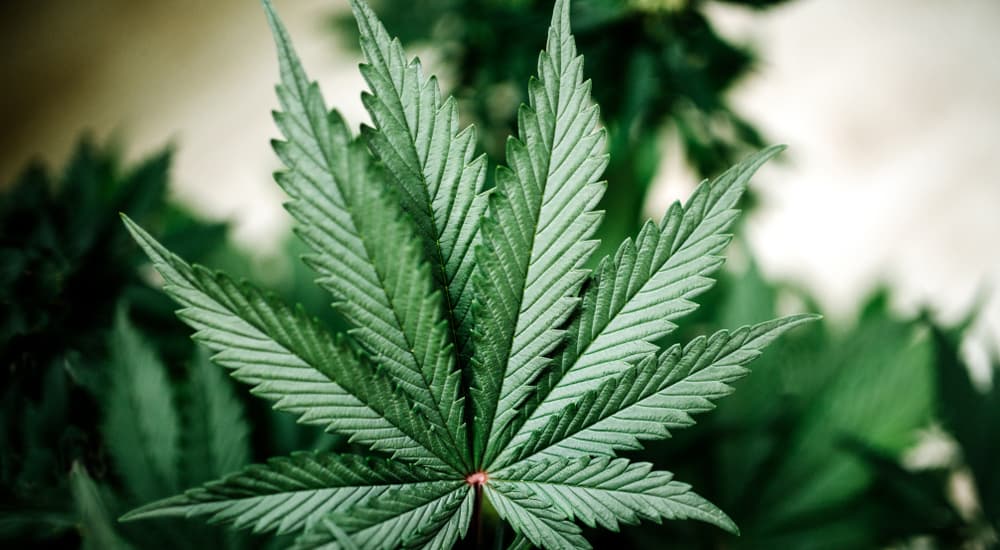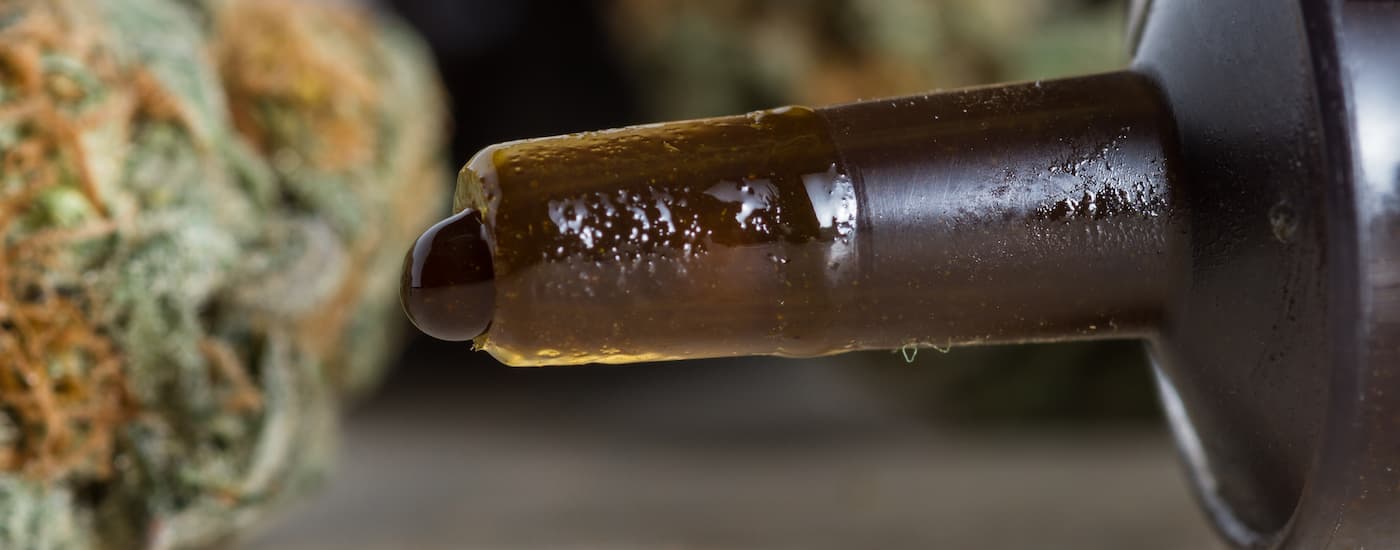Perhaps one of the most well-known names in the medical world of cannabis is Rick Simpson. Over the last two decades, Simpson’s name and product have grown in popularity for good reason. Without further ado, who is Rick Simpson and what is Rick Simpson Oil?
Rick Simpson
Rick Simpson was working in a Canadian hospital as a maintenance tech where he was exposed to asbestos, among other chemicals in poorly ventilated areas. Repeat exposure to those chemicals caused Simpson to collapse while at work, leading to a flood of other symptoms that would plague him for the following years. Those symptoms included dizziness, nausea, and a ringing in his ears.
Simpson visited his doctor and underwent multiple treatments with no relief to his symptoms. At this point, Simpson received recommendations from a friend to use cannabis to treat his issues; however, his doctor refused to allow him to use it. He went about getting cannabis on his own and used it to treat his symptoms.

Not long after, in 2003, bumps started to appear on Simpson’s arms. His doctors diagnosed them as a form of skin cancer called basal cell carcinoma. Again, he followed his doctor’s advice and used medication paired with other treatments to kill the cancer cells, but Simpson had little luck. As nothing was working, Simpson turned to cannabis again. He applied a potent cannabis oil to the affected areas on his arm and not too long after – his cancer cells were gone.
After Simpson’s successful experience with the cannabis oil, he decided to provide his cannabis oil to anyone who would need it free of charge. Before the Canadian government shut him down, Simpson had over 2,000 cannabis plants and had helped over 5,000 people. He even created a website so he could reach more people, providing them with testimonials, his story, and directions to create the product that has become known as Rick Simpson Oil (RSO).
As of 2013, Simpson left his native Canada and relocated to Europe. There he still advocates for cannabis in the medical field but is no longer a supplier of cannabis oil. The things you might find labeled RSO and the products discussed in the medical field are based on the product he created, but they are not actually his.
Rick Simpson Oil
All RSO starts as a strain of cannabis called Indica. At one point, the strain of cannabis played a significant role in how people decided what to smoke. Indica was believed to be sedating, and supposedly had a relaxing effect on its users. Sativa, on the other hand, was supposed to be more uplifting or energizing, used more for social gatherings or when the user had to get a lot done.
The reality is that those are misnomers. How cannabis affects you is based on your body chemistry and the cannabinoid levels in the plant. That being said, Rick Simpson suggests that RSO be made with Indica for best results.

RSO is also high in tetrahydrocannabinol (THC), over 90% to be exact. THC is the chemical compound responsible for the psychoactive responses people have to cannabis. It works by binding to cannabinoid receptors on cells. The receptors are part of the endocannabinoid system (ECS) that’s function is to help maintain homeostasis in the body. Everyone has this system and naturally occurring cannabinoids in their bodies; they are involved in physiological processes such as temperature regulation and mood.
THC is not just limited to causing potential hallucinations and euphoric sensations, but like CBD, it can be used to treat medical conditions. Cannabidiol (CBD) is non-intoxicating and used by patients or cannabis smokers who wish to remain clearheaded.
With CBD being a non-intoxicating option, it is important to note that not all cannabis oils are the same. Rick Simpson Oil is supposed to be high in THC regardless of how or where it is used. CBD oil differs significantly because it will have very low levels of THC.
How to Use Rick Simpson Oil

RSO is meant to be taken orally, but it can be mixed in with a food or drink. If you are going to be using RSO for medical purposes, you should consult your doctor first. If you are worried about how it could react with any medications you are on or are just new to the world of cannabis, again, consult with your doctor. You cannot overdose on cannabis, but you can feel adverse side effects such as dry mouth (cottonmouth), paranoia, anxiety, hallucinations, and many others. If you feel any of those, drink a glass of water, take a walk or lay down, and do anything that would usually calm you down until the effects wear off. That said, it is best to start slow and in small amounts. Give yourself at least two hours before taking more.
How to Make Rick Simpson Oil
Rick Simpson no longer produces RSO, as mentioned above, but there are recipes for the oil, which can be modified to fit your individual needs. To make RSO you will need the following materials:
- One 5-gallon bucket
- One large/deep bowl
- A rice cooker (no lid)
- A 2×2 piece of wood
- 1 pound of dried Indica
- Two gallons of a solvent (for best results use 99% isopropyl)
- Plastic, needless syringes
- Cheesecloth or coffee filter
- Funnel
- Clean and empty water containers
- A fan and well-ventilated room

Step One: Place your Indica into the 5-gallon bucket. Add enough solvent to dampen the cannabis and crush it using the 2×2. Once it is crushed, add more solvent until the cannabis is completely covered. Stir for three-four minutes. Pour the mixture into your large bowl, but leave the cannabis in the bucket for a second wash. For your second wash, add new solvent to the bucket until the cannabis is submerged. Stir once more for three-four minutes with the 2×2. Add the mixture from the second wash to your oil-mix from your first wash.
Step Two: Using your clean water container, insert the funnel into the opening, and place your cheesecloth or coffee filter inside. Pour the mixture into the funnel and allow it to drain into the container. To speed this process up, use multiple containers. Your filtered mixture will now look a lot like gasoline.
Step Three: For this step, you will need to make sure you are in a well-ventilated area, with open windows if possible. Aim your fan at the base of your rice cooker to blow fumes away from you. Make sure there is nothing red-hot and no open flames in your area as this process is highly combustible.
Next, pour your mixture into the rice cooker until it is three-quarters full. As your mixture heats, the solvent will burn off, and the mixture level will lower. The temperature should remain between 210 and 230 degrees Fahrenheit, which is necessary for decarboxylation to occur. Do not heat above 300 degrees as the RSO will be unusable. As it lowers, keep adding more of the mixture. Once you have only two inches of the mixture remaining in your rice cooker, you can now add 10 to 12 drops of water. More of your solvent should burn off. When it has evaporated a great deal more, gently swirl the rice cooker around to release any remaining solvent.
When the solvent is almost entirely removed from the mixture, it will begin to make a crackling sound, and the oil should be bubbling. When it stops bubbling, the solvent has been removed.
Step Four: While the mixture is still warm, siphon the oil into your syringe. Allow them to cool before use. The end product will be thick, so if needed, the syringe can be warmed up under hot water for use. This recipe will produce around 60 grams of oil.
RSO may not be deeply researched, as with most medicinal uses of cannabis, but many users have had positive results and relief from their conditions.


